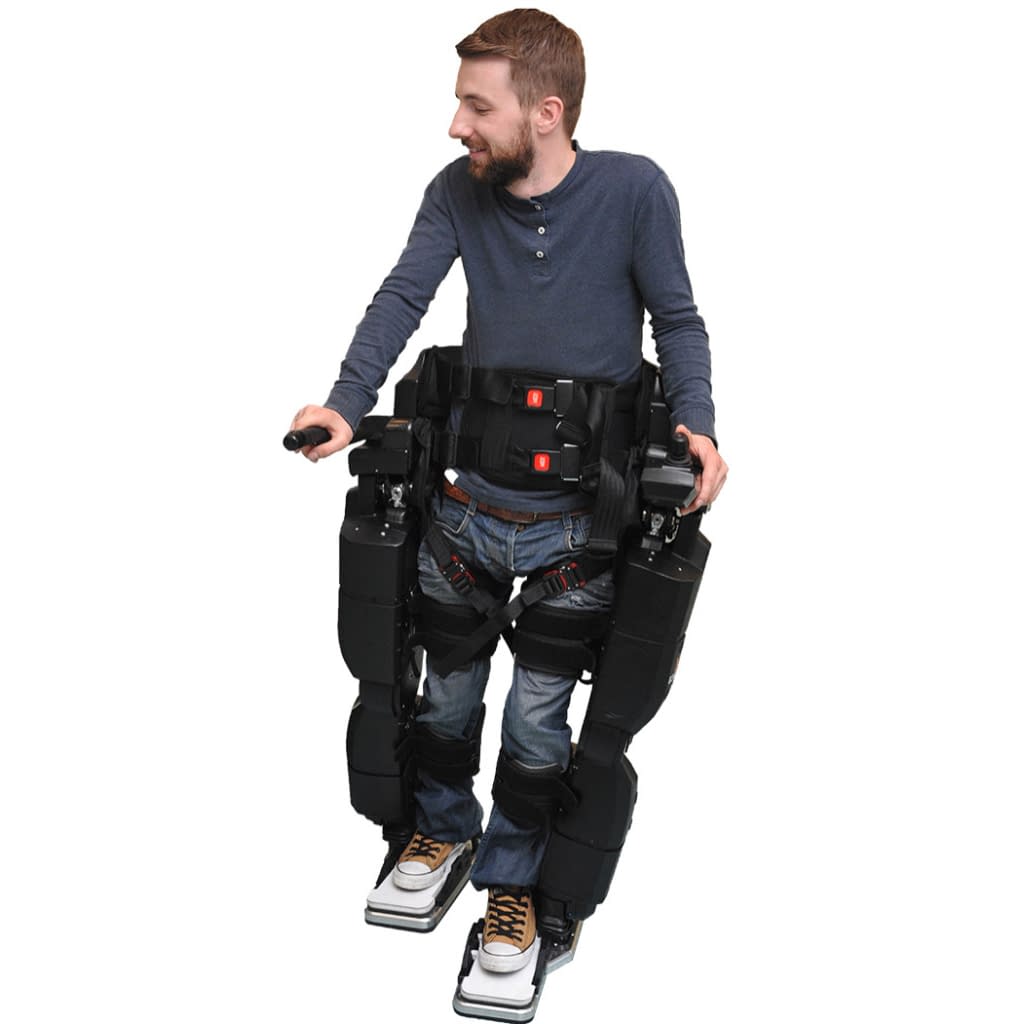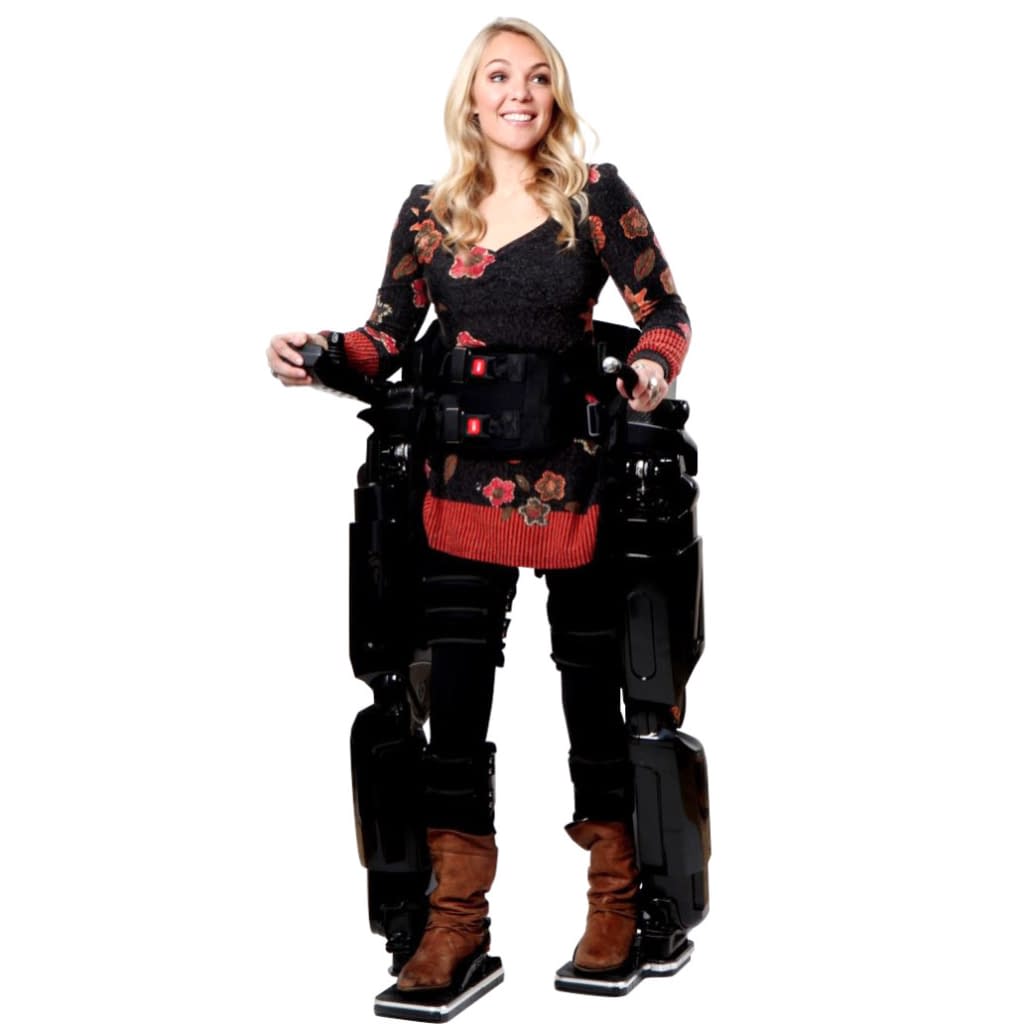Full Description
The REX for Clinical Use and Personal Use is the premiere commercial exoskeleton for individuals with complete lower body paralysis. The REX is designed to be:
- Self-supporting and secure.
- Alleviate complications due to prolonged wheelchair use.
- Developed for Robot-Assisted Physiotherapy (RAP).
- Elevates users from a sitting position into a robot-supported standing position.
- Reduces burden on therapists performing standing therapy.
For a while exoskeletons that take full control of the gait cycle where receiving a lot of flack for not being as capable as their variable assist counterparts. New research findings in the middle of 2016 have demonstrated, however, that devices such as the REX have a place in the medical industry. It has been discovered that even though the REX moves the rehabilitation participant by itself, it can still provide medical benefits. Exoskeletons that take full control of the user’s legs are now starting to be used as a stepping stone towards rehabilitation with variable assist robotics.
The REX can be used as a starting point in a medical program for users with severe mobility impairments. A similar research exoskeleton in conjunction with virtual reality and haptic feedback was also shown to re-activate surviving neural axons for people with complete spinal cord injury. All of this is in addition to the secondary beneficial effects to standing.
In 2016 the REX for Clinical Use is undergoing evaluations and a new set of clinical trials.
In 2016 REX P for Personal Use is capable of supporting the entire weight of the user and shifting stances. It is the only powered exoskeleton available for people that lack the necessary residual mobility and/or upper body strength required for standard medical exoskeletons.






Reviews
There are no reviews yet.